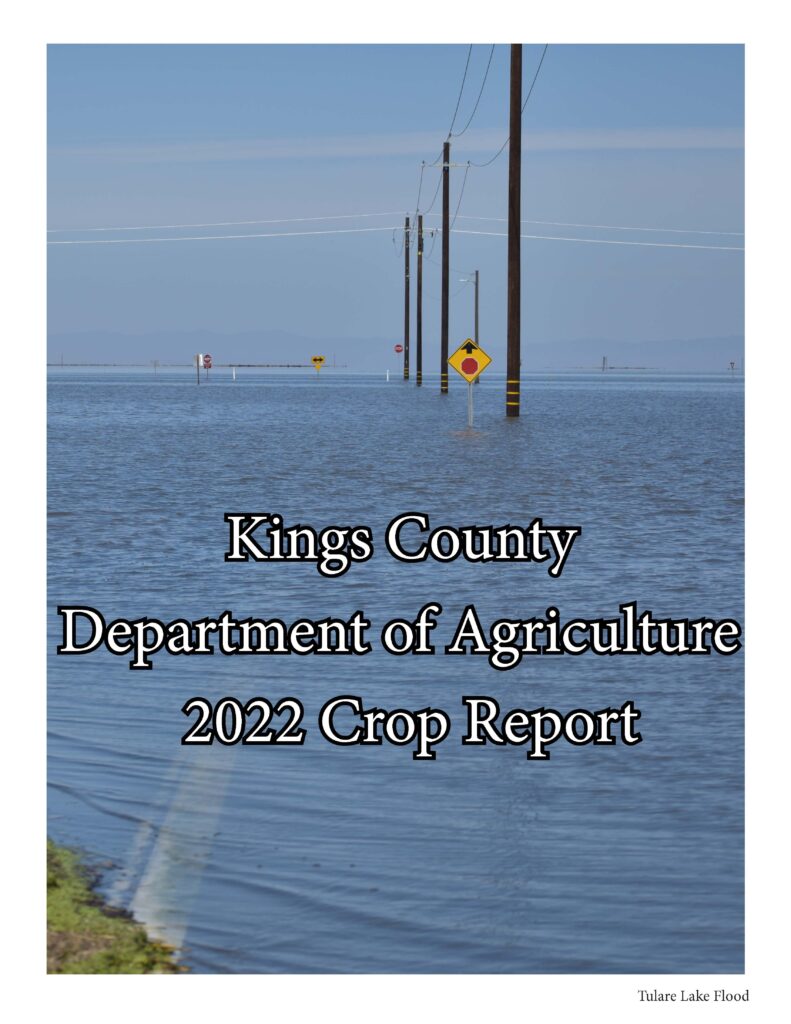After historic flooding in California’s Tulare Lake subbasin last year, farmers in Kings County alone submitted claims of $86 million in losses for crop insurance.
That’s 3.3% of the total gross value of agricultural products listed in the 2022 Kings County crop report. And it’s far above the $8 million in losses reported for 2022, the third year of extreme drought.
As exceptional as 2023 was, insurance experts say it was the tip of a growing iceberg as climate-driven crop losses are trending upward across the country, with some of the steepest losses in the Central Valley.
Those trends have pushed more farmers to buy crop insurance. Since 2019 every San Joaquin Valley county has seen an increase in insured acreage.
The largest surge in coverage was in Kern County, which went from 843,000 acres insured in 2019 to almost 1.4 million acres in 2023, according to data provided by the U.S. Department of Agriculture staff. That includes both crops and rangeland.
Losses have also skyrocketed in the valley.
In 2019, for example, Fresno County suffered $48 million in losses. As drought set in starting in 2020, losses increased every year. In 2023’s flood year, Fresno County suffered $121 million in losses, about 1.5% of total gross ag value for the county in 2022.
Other valley counties saw similar trends.
A 2021 Stanford University study found that as Central Valley counties have suffered swings from crippling multi-year droughts to extreme flooding, they have also experienced some of the steepest losses from 1992-2017 increasing annually on average by more than $2 million.
Expensive safety net
While the changing climate is leading to higher losses in agriculture, many farmers can get some protection through federal crop insurance. The federal government subsidizes 60% of crop insurance premiums and farmers pay 40%.
“Extreme disasters will generally increase participation,” said Jeff Yasui, regional director for the USDA’s Risk Management Agency. “If you foresee that weather conditions are changing, or that you’re very likely to have a drought, or lack of water the following year, you’re gonna want to make sure you have insurance.”
Those trends have steadily pushed up the government’s costs for the crop insurance program. A November 2023 report from the U.S. Government Accountability Office found that the government paid $17.3 billion in 2022 for crop insurance, an amount well above previous years.
“There has been an increase in losses due primarily to weather conditions that seem to be getting worse,” said Yasui.
The nonprofit Environmental Working Group published an analysis last fall pointing to extreme weather as a primary cause for the steep rise in indemnities.
“As extreme weather events become both more common and more catastrophic, farmers will continue to suffer, and taxpayers will continue to foot much of the astronomical bill,” said EWG Midwest Director Anne Schechinger in a news release last year.
Not our problem – yet
Unlike private insurers, which are fleeing climate extreme regions such as wildfire-prone northern California and hurricane-prone Florida, federal crop insurance isn’t going anywhere. Part of the problem for private home insurance is a lack of sustainability – companies simply can’t afford to pay out repeated huge losses.
“That’s not our problem right now in crop insurance,” said Todd Snider, an agent for Western Ag Insurance, a crop insurance broker. “We don’t have to deal with that yet.”
Since crop insurance is federally backed and extends across the entire country, it isn’t at risk of insolvency like some private insurers, said Snider. Paying out 100% losses is not happening very often, unlike private insurers, he added.
Snider’s company works in 26 states but mainly focuses on the west. It insures about 500,000 acres in the San Joaquin Valley.
Still, Snider admits there are problems.
“We do have issues where some of the rates have not been re-rated as continuously as they should have been,” said Snider. “The growers are getting a discount or getting a deal because those rates haven’t been revised or updated as often as they maybe should have.”
The big shift
Climate change is leading to more variability which complicates data gathering, said Daniel Sumner, agricultural economist at UC Davis.
That means crops will likely have to shift, he said. Regions that become progressively hotter likely won’t be able to sustain the same crops in the future and may have to adapt by taking on new types of agriculture entirely, said Sumner.
Such shifts can pose big problems for growers.
Sumner pointed to wine grapes as an example. As it warms, Sonoma County might not be able to grow pinot noir varieties of grapes anymore, which the area is famously known for. Shifting an entire crop, brand and consumer expectations can be a huge risk and challenge.
In the San Joaquin Valley, in low lying areas prone to flooding farmers may need to shift to crops that can withstand not just drought, but weeks or even months of standing water.
Pistachios, for example, are a highly valuable crop. Orchards have proliferated across the valley, but pistachio trees can’t survive long bouts covered in water.
In Kings County, home to the massive old Tulare Lake bed, pistachio acreage has ballooned since the start of the 2012-2016 drought going from 16,159 harvested to 43,454 harvested acres, according to the 2022 Kings County crop report.
Pistachios were the No. 2 ranked crop in valuation, bringing in nearly $230 million. The No. 1 ag commodity was milk, earning nearly $1 billion in 2022, per the crop report.
Dairies in Kings County and along the border with Tulare County were especially hard hit in last year’s flooding, with some having to shut down.
“Those are adjustments everybody’s looking at,” said Sumner. “And as far as I know, there’s no insurance for that.”
Even though understanding the variability brought by climate change is difficult, it will impact the future of crop insurance, said Sumner.
“It certainly changes, it’s harder, it’s more complicated,” said Sumner. “And from the point of view of the taxpayers, it’s probably more money to provide the same amount of subsidy.”
Share this:
- Click to share on Facebook (Opens in new window)
- Click to share on Twitter (Opens in new window)
- Click to share on LinkedIn (Opens in new window)
- Click to share on Reddit (Opens in new window)
- Click to share on Tumblr (Opens in new window)
- Click to share on Pinterest (Opens in new window)
- Click to share on Pocket (Opens in new window)
- Click to share on Telegram (Opens in new window)
- Click to share on WhatsApp (Opens in new window)
- Click to print (Opens in new window)








